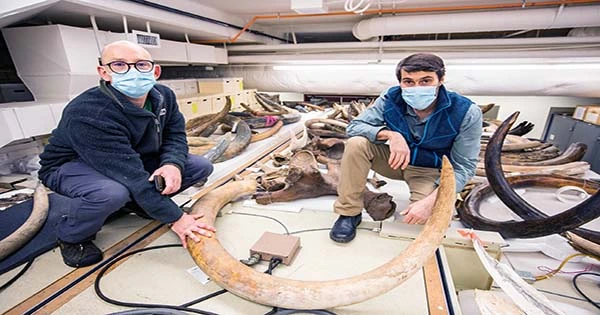After capturing a massive mammoth tusk poking out of the side of a river bank in Alaska, a University of Virginia researcher has piqued the internet’s curiosity. The tusk was discovered a few years ago in the Koyukuk River, near Coldfoot, Alaska, emerging from clear layers of silt that appear to date back to the Pleistocene era (2,580,000 to 11,700 years ago). It is being monitored by the University of Alaska Fairbanks. You can see the ropes that have been fastened to protect the tusk from dropping into the river below if you look attentively.
Woolly mammoth tusks and remnants may be found across Alaska, and the mammoth was named Alaska’s state fossil in 1986. The woolly mammoth descended from the Steppe Mammoth, which crossed the land bridge spanning what is now Russia and Alaska approximately 100,000 years ago and is thought to have gone extinct around 3,600 years ago. As a result, discovering mammoth tusks in Alaska is not uncommon, yet it is nonetheless remarkable. Although this example is unusual for its perilous location, many others have been discovered in melting ice or simply laying around.

By studying each each layer of mammoth tusks, scientists can gain an almost unique insight into the mammoth’s existence. A bisection of a mammoth tusk discovered at the end of last year indicated that about 17,000 years ago, a mammoth traveled 50,000 miles (80,000 kilometers) across Alaska. What should you do if you come upon one of these gigantic antiques in the vast Alaskan wilderness? It is lawful to store, produce jewelry out of, and even transport mammoth ivory through customs (as long as it was extracted from private land with the owner’s permission).
Ivory removal from state or federally controlled land is prohibited, yet local law enforcement finds it difficult to detect such offences. According to Deseret News, Mammoth ivory is not very valued due to its availability, with jewelry shops in the region paying roughly $35-70 per pound. If you come across one on public land, you should report it to the authorities or leave it alone.
















